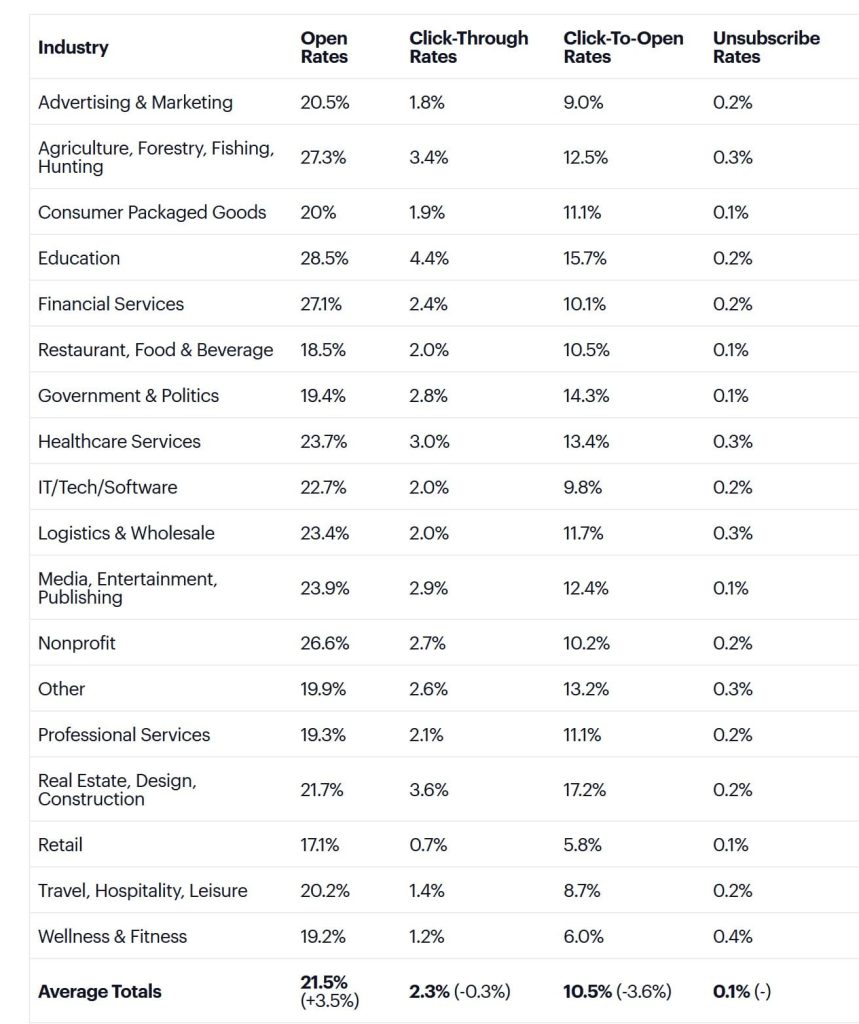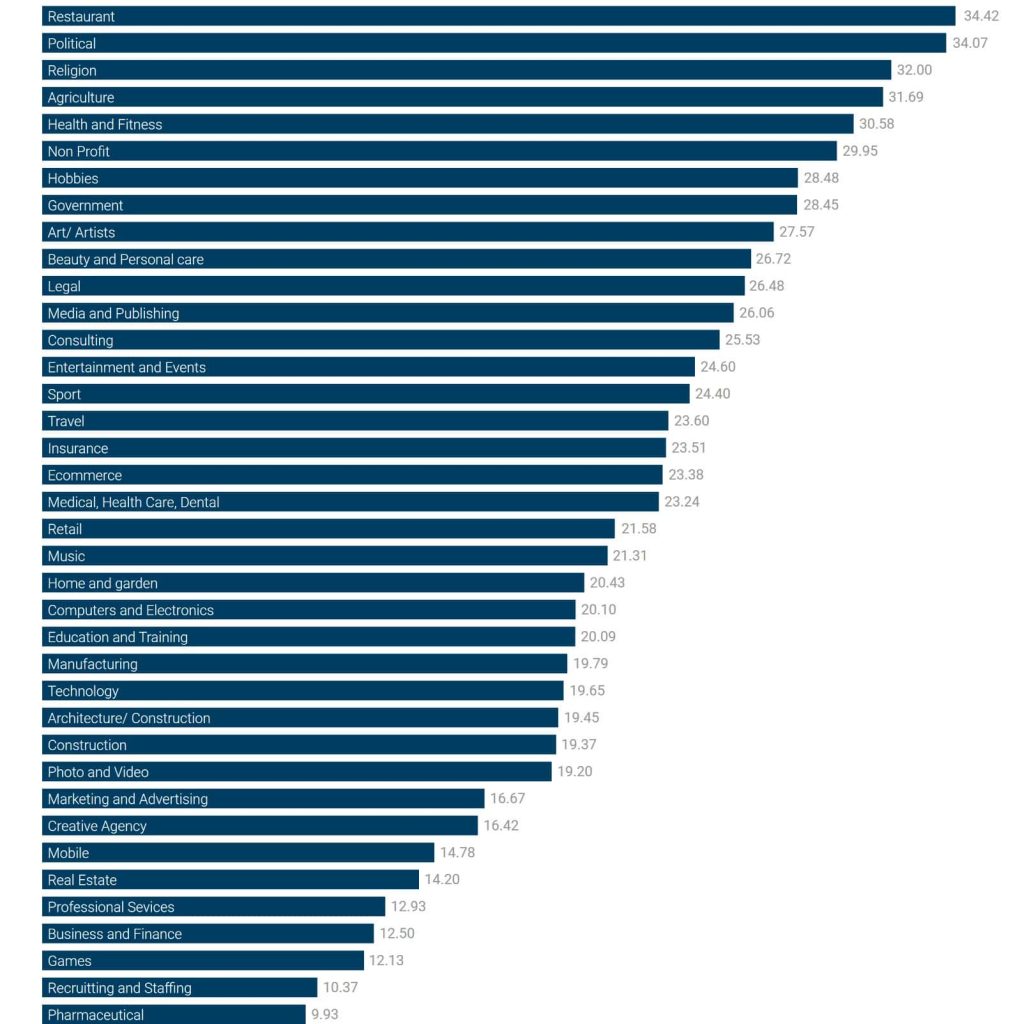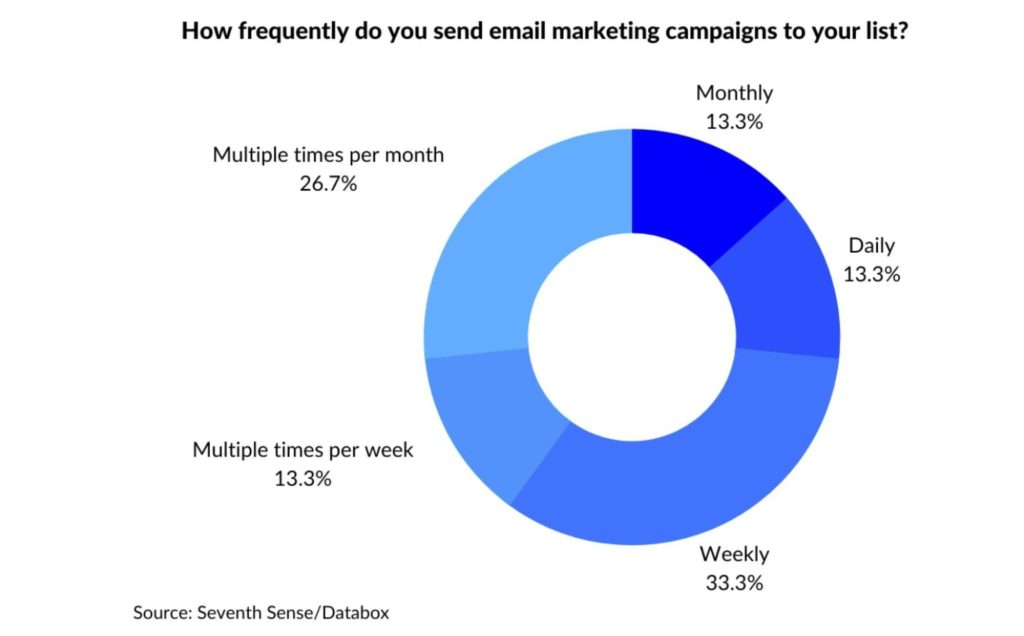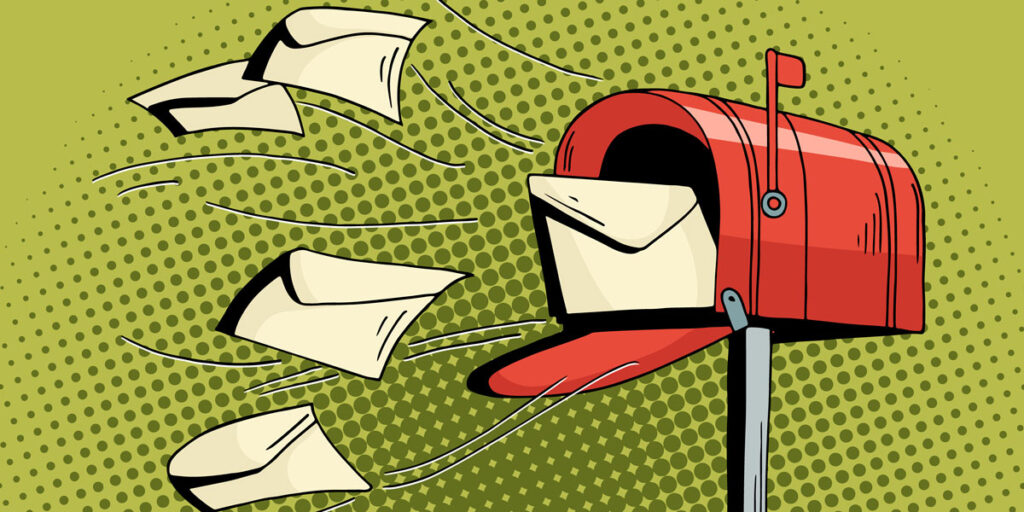In the email marketing world, few metrics bear as much sway as the email open rate. It’s responsible for the first impression. The higher it is, the better. Because it states that a larger number of subscribers engage with your campaigns.
Let’s delve into the intricacies of email open rate and depict what it is, how to calculate it, and what some best practices and strategies are to enhance it.
What Is the Email Open Rate?
It’s a metric that measures the percentage of recipients who click on an email. Usually, it is tracked via an invisible element embedded in the email.
This rate is calculated by dividing the total number of emails opened by emails sent minus emails bounced.
The email open rate formula is:

Source: Mailmunch
For instance, if a company has an email list with 10.000 subscribers and 3.500 open the emails sent during a campaign, that translates into an open rate of 35%.
The email open rate is a sort of compass of an email campaign’s success, as it is one of the pillars that measure its effectiveness. This rate helps evaluate the attention-grabbing power of the subject lines and how much your audience resonates with your content.
Obviously, high open rates show that your subscribers value your content. They are interested in what you have to say and willing to invest their time in checking your offers. And pave the way to enhanced click-through rates and better conversions.
They are not some sort of vanity metric; they are the gateway to valuable interactions and more in-depth connections with your audience.
What Is a Good Open Rate for Email?
Regarding industry benchmarks and what is considered a good open rate, it’s a bit like estimating how your favourite football team is stacked against its competitors in the league.
What might be considered a good opening rate for an industry might be precisely the opposite for another one.
As a general idea, on average, email open rates glide around 20% for most industries.
But, be aware that it depends on a variety of factors like the quality of the email list, the nature of your audience and content relevance.
For example, sectors like healthcare of government services may have higher open rates than retail or entertainment.
When assessing good open rates for email, compare your rates against the benchmarks typical to your niche or industry. But use them just as a guideline on what you could eventually improve. You need to understand the context, what works for your industry and what your audience wants.
Finally, the goal is not to match or exceed an average but to serve your audience best and reach your business goals.
The average open rate for email marketing 2023 by industry – Campaign Monitor study

Source: Campaign Monitor
As we can notice the average email open rate is 21,5%, the average CTR rate is 2,3%, the average click-to-open rate is 10,5 % and the average unsubscribe rate is 0,1%.
Email open rate benchmarks for 2023 – Mailerlite’s study
Mailerlite provides another set of benchmarks based on data from over 1 million campaigns and finds that
- The average email open rate across industries was 37.65%.
- The average email click-through rate (CTR) was 8.93%.

Source: Mailerlite – Average email open rate
Open rates varied a lot across industries, with top-performing ones seeing a 45% open rate (government and medical industries). Yet, the lowest score was about 29% (games and media and publishing industries).
Email open rates by industry 2023 – Mailpro Email Marketing Benchmark 2023
Their study considered about 100.000 accounts selected randomly among their clients. And revealed that some of the least performing open rates – about 10% – were registered by the pharma and staffing industries.
The best-performing email open rates – of about 34% – were seen by restaurant and political newsletters.

Source: Mailpro
Factors That Impact Email Open Rates
Multiple elements influence the email open rates, but among the most significant are:
Subject lines
Absolutely, they have the power to make or break your email open rates as they are responsible for the first impression of your emails. We all know that if the title catches our interest, we will open the email, otherwise not.
But you must pay attention and keep the right balance between attention-grabbing and click-bite.
Sender name and email address
Unknown senders have a good chance of getting lost in the digital abyss. Meanwhile, a familiar and recognisable sender name and email address increase the chances of opening, as the connection already exists and the trust was already established.
Frequency and timing
It’a another element that is crucial for open rates. Sending emails at 2 am in the morning is not likely to increase them. For the simple reason that your audience most likely sleeps by then.
You must identify the hourly interval when your audience is more likely to check their inboxes.
And also gauge the right frequency. Bombarding your audience can lead to disengagement and even unsubscribtion. Sparse communication might lead to being ignored.
Content and design of the email
Create visually appealing and well-formatted emails for skimming, with eye-catching visuals and concise but valuable content. It’s most often the recipe for success.
Also, pay attention to your images and graphics so as not to negatively impact the loading and display of your messages.
Relevant audience
Another critical factor is having a list of subscribers interested in what you have to share. Sending an email with travel tips to a person interested in gaming has a high chance of being ignored. Because the content does not resonate.
You have to craft your content based on your audience’s interests, needs, pain points, and preferences to have your emails opened.
The above-listed factors work in symphony as the instruments of an orchestra. Each of them has its own role, but they are interconnected. Combined, they should attract your audience’s attention and entice them to explore your offering.
Strategies and Best Practices to Improve Email Open Rates
As email marketing is still one of the most cost-effective strategies, improving the open rates plays a pivotal role.
Craft Eye-Catching Subject Lines
Best practices and examples
Make it clear and concise. Create attention-grabbing headlines that offer a glimpse into the content. Make them clear and punchy if possible.
Example: “Unlock Fabulous Savings – Your Personal Offer Awaits”
Use questions and pique curiosity. Engage your subscribers by asking questions that spark curiosity and raise interest. Make them impatient to read the content of the email.
Example: “Ever thought of Adding Another Source of Income?
Create a sense of urgency. Humans are characterised by the “fear of missing out.” Employing words that infuse rush can seriously boost email open rates. Words like “act now,” “limited time,” and “expiring soon” have a high impact.
Example: “Flash Sale Alert! 24 Hous Only – You Won’t See This Price Again!”
Segmentation and Personalisation
Personalise email messages to people. Tailoring your message is more than using the recipient’s first name. It implies a deep understanding of your audience’s pain points, interests, preferences, behaviours and demographics.
Conceive subject lines that align with your subscribers’ interests and ensure they perceive the message as being addressed to them personally.
Example: “Leanne, Here’s Your Personalised Meal Plan for the next 3 months!”
Segmentation for relevance. Subscribers have their unique traits. Consequently, your audience should be segmented based on factors like interests, demographics, engagement levels, purchase history, etc.
Considering these elements, craft tailored subject lines to cater to the unique needs of each segment.
Example: “Exclusive Tech Features for Our Early Adopters – You Are In”
Most probably, your customer base isn’t homogenous, so neither should your emails. Use customer segmentation to consistently send relevant emails that resonate.
You can segment your audience by many parameters, including age, gender, location, likes and interests, website interactions, etc. Adjust the content of your emails accordingly to appeal to different sections of your audience.
One effective and lesser-known way to segment your audience is via their personality traits. Do they make decisions based on logic and reason or by emotion and feeling?
When they send reviews, do they tend to relate facts and numbers, or do they share their experience with the product? These subtle differences in communication directly impact whether they are convinced by a marketing campaign.
Segment your audience by personality and refine your messaging accordingly (particularly in your subject line) to increase open rates and engagement.
Symanto offers two models to measure consumer personality: Symanto Psychographics and Symanto Big Five. Our technology uses natural language processing (NLP) technology to analyse even short texts and give accurate insights into what makes consumers tick.
Symanto Psychographics
Symanto psychographics merges Communication Style and Personality Traits to deliver advanced segmentation insights. They are based on Myers-Briggs’s personality theory.
According to this theory, each personality has four separate psychological functions. Each person prefers primarily one way to fulfil such functions:
- Feeling or Thinking – generally, the individual prefers to make decisions using logic (thinking) or emotions and other circumstances (feeling).
- Introversion or Extraversion – is the person’s style more open to their external world (extrovert) or oriented more towards their inner world (introvert)?
- Perception or Judgment – does the individual interpret reality by organising it (judgement), or do they consider current stimuli (perception)?
- Intuition or Sensing – does the person use her five senses (sensing) to process information or interpret meaning (intuition)?
Using this model makes identifying personality types easier based on how people communicate. Consequently, Symanto Psychographics is reliable on short texts such as emails, reviews, tweets, etc.
As consumer preferences evolve in time and change based on context, psychographics are a top way to measure and enhance engagement.
Segment email list based on personality traits
Based on small text analysis, Symanto’s Personality Traits API can identify whether a person is more rational or emotional. Knowing such details helps choose the type of messages the recipient will most likely engage with.
- Rational thinkers – make decisions based on facts, logic and objective data. Usually, they are more conscientious.
- Emotional thinkers – make decisions based on emotions and affinities. Usually, they are more agreeable and relaxed.
Communication style
The Communication Style API automatically analyses the narrative style and intention behind it. Using it allows you to comprehend your customers’ communication preferences and motivations.
Symanto’s Communication Style API creates statistics on whether your clients are:
- Information-seeking – they ask for advice and ask questions.
- Self-revealing – they voluntarily share opinions and experiences.
- Action-seeking – they want recommendations, attention and support.
- Fact-oriented – they want factual information.
Get Started with Symanto
If you want to learn more about the impact of targeting by psychographics, get in touch or book your free personalised demonstration.
Dynamic content
Test dynamic content in subject lines and change details based on user data. Some options are highlighting offers for a particular location or displaying recommendations based on historical purchases.
Example: “Check out New Summer Styles – Perfect for Berlin Residents!”
Optimise Sender Information
Even if quite frequently underestimated, sender information significantly impacts open rates.
Use recognisable sender names to build trust
Familiar names matter. Choose a sender name that your audience is familiar with; it could be your brand name or the name of a person within your company that customers recognise easily.
Example: “ X Company” or “Laura from Zara”
Leverage the sender name to provide value. Add relevance to the sender’s name. Consider inserting a short tagline or some clues on the email’s content.
Example: “Latest Google Update: Insights and Tips from SearchEngineJournal”
Be consistent. Using the same sender names builds trust and recognition. Changing the sender’s name frequently can generate confusion and even raise suspicions about the email’s authenticity.
Employ a clear, branded sender address
For your email sequences, choose a recognisable email address that is branded and reflects your organisation.
Example: “support@www.symanto.com”
Avoid using ambiguous email addresses and authenticate your emails. Consider implementing protocols like Sender Policy Framework and DomainKeys Identified Mail to make sure your email campaigns pass authentication checks.
Frequency and Timing Best Practices
You must sync with your subscribers’ rhythm to orchestrate higher email open rates.
Identify your audience’s preferences and behaviours
Get actionable insights from data.
Find out when your audience is the most active, and check your analytics. Analyse data to spot patterns, which days of the week your emails are opened most and what time of the day. Identify the optimal timing and land in your subscribers’ inboxes at the right time.
Best time of day. Generally, optimal timing is between 9 and 11 am when people first settle into their workday and begin opening their emails.
Best day. Studies show that email open rates peak between Tuesday and Thursday. People are working and fall into a rhythm of regularly opening their emails.
Though the studies differ slightly, one thing is consistently agreed upon open rates fall drastically during the weekend.
Individualise sending time
Some email marketing services now offer Delivery Time Optimisation (DTO) which uses machine intelligence to send emails at the optimal time for each customer. That way, your emails are sent precisely when your customers are most likely to engage.
Consider time zones.
Optimise your scheduling to include these time differences if you have an international audience spread across multiple time zones. Considering your subscribers’ convenience increases the chances that your emails are opened.
Check your industry-specific practices. Industries have different sweet spots for email engagement. Industry norms and behaviours usually influence your audience’s responsiveness.
Over the years, the top reason given for why people unsubscribe from newsletters is “too many emails.”
While it might feel like a clever idea to increase engagement by upping the frequency of your newsletters, you don’t want it to come at the expense of losing subscribers unnecessarily.
So, how often should you send them? Most companies send email newsletters weekly or multiple times a month. But is that right for your business?

Source: TheSeventhSense
Sadly, there’s no neat answer to that question.
If you can offer varied, high-quality content that’s tailored to different segments of your audience, then you can afford to send emails more frequently, but there’s still a tipping point.
The best technique is to experiment and look at your data to determine how email frequency affects open rates for your business. Look closely to observe how different segments of your audience respond. From there, you can adjust your frequency on a more personalised basis.
A/B Test to spot the optimal timing
Experiment and refine. Split testing the time when you send your emails can deliver powerful insights. Segment your audience and test different days of the week and different times of the day to identify the sweet spot. Analyse your best results and use this data to refine further your email scheduling.
Test, Analyse and Repeat. Your audience preferences evolve continuously, thus you have to run tests periodically. What works now might not work the following year.
Determining the right timing and frequency for your email involves a mix of experience, data analysis, testing and some intuitive flair. The purpose is to spot when your audience is the most receptive.
Create Top-Level Email Content
Content is the backbone of your email marketing success. It’s why your subscribers engage, read or pause your messages.
Tailor your content to the audience’s pain points and interests
Customer-centric approach. Know your clients’ interests, preferences, pain points and desires in detail. Segment your audience, considering their preferences and conceive content that responds directly to each segment.
Stay relevant. Each email you send should be relevant and add value. Provide solutions, and offer tips and recommendations that address particular pain points of the respective audience segment.
Advanced personalisation. Get insights into your audience’s preferences and tailor the entire email content. For instance, offer content based on customers’ purchases or browsing history.
Insert visuals and multimedia
Eye-catching visuals captivate. Make your email messages more enchanting and appealing by including visual elements like images, gifs, infographics or videos.
Besides being entertaining, visuals communicate messages faster and in an effective way. Just make sure they are aligned with your message and brand.
Enhance engagement with interactive elements. Consider including interactive content in your emails. Quizzes, polls, and clickable items spark engagement, making emails a two-way communication channel.
Optimise for mobile viewing. Taking into consideration that a large chunk of emails is read on mobile devices, ensuring that your email layouts and multimedia elements are responsive is an absolute must.
Mobile users expect a seamless experience. Any failure at this level, like slow loading, unresponsive design, or elements that do not display, can cause immediate disregard.
Ensure your email messages are responsive across devices and platforms and test them before sending to avoid any inconveniences.
Tools to Track and Analyse Email Open Rates
Disposing of the right tools to measure your email open rates is essential. Some of the most prominent email marketing platforms and email analytics tools are
Email Service Providers (ESPs) and their analytics dashboards
Most reputable ESPs like ConvertKit, Mailchimp, Mailerlite, or Constant Contact offer comprehensive analytics dashboards and strong tracking features. They offer a detailed overview of your email campaign’s performances and an array of metrics beyond the simple open rates.
Google Analytics integration
Integrating Google Analytics into your email marketing activity offers advanced insights into recipients’ behaviour post-email clicks. It tracks the customer journey after the email touch point.
Incorporating UTM parameters into email links allows more in-depth tracking in Analytics. And identify which messages drive particular actions like site traffic and purchases.
Customer Relationship Management (CRM) integrations
CRM systems like HubSpot or Salesforce integrate seamlessly with email marketing platforms proposing more refined capabilities. They enable you to link email communications with customer profiles delivering a comprehensive overview of individual journeys.
Other important email marketing metrics
Measuring email open rates is just the tip of the iceberg. To evaluate the efficiency of your email marketing efforts, you need more in-depth metrics like
Click-Through Rates (CTRs). CTRs indicate the percentage of recipients that went beyond opening your email; they interacted with it by clicking on a link. A high CTR is the consequence of relevant content and effective call-to-action. And is the expression of a high interest.
Conversion Rates. They track the percentage of users who executed the intended action inserted in the email. These actions may be downloading a piece of content, a purchase, signing up for a webinar, etc. High conversion rates show an efficient email marketing activity that motivates users to act.
Bounce Rates. They refer to the percentage of emails that fail to land in the recipient’s inbox. A high bounce rate usually indicates a low-quality email list, technical challenges or sender reputation issues.
All these metrics are to be interpreted in correlation and interdependency to obtain a comprehensive panorama of your email campaign’s performance.
For example, a high open rate but a low CTR might mean that your subject lines are catchy, but your content is not engaging enough, or your CTAs are not compelling enough.
A high CTR combined with a low bounce rate indicates a successful targeting activity and a healthy list.
Regularly analysing these metrics empowers your business to continuously improve the email strategy and optimise it based on the insights identified. The final purpose is to inspire action and drive the desired outcomes.
Take Away
Crafting engaging email campaigns is a blend of creativity, empathy and relevance. To reach your business goals, you have to conceive tailored experiences that resonate and captivate. That will generate not only higher email open rates but also create a personal bond with your audience.

